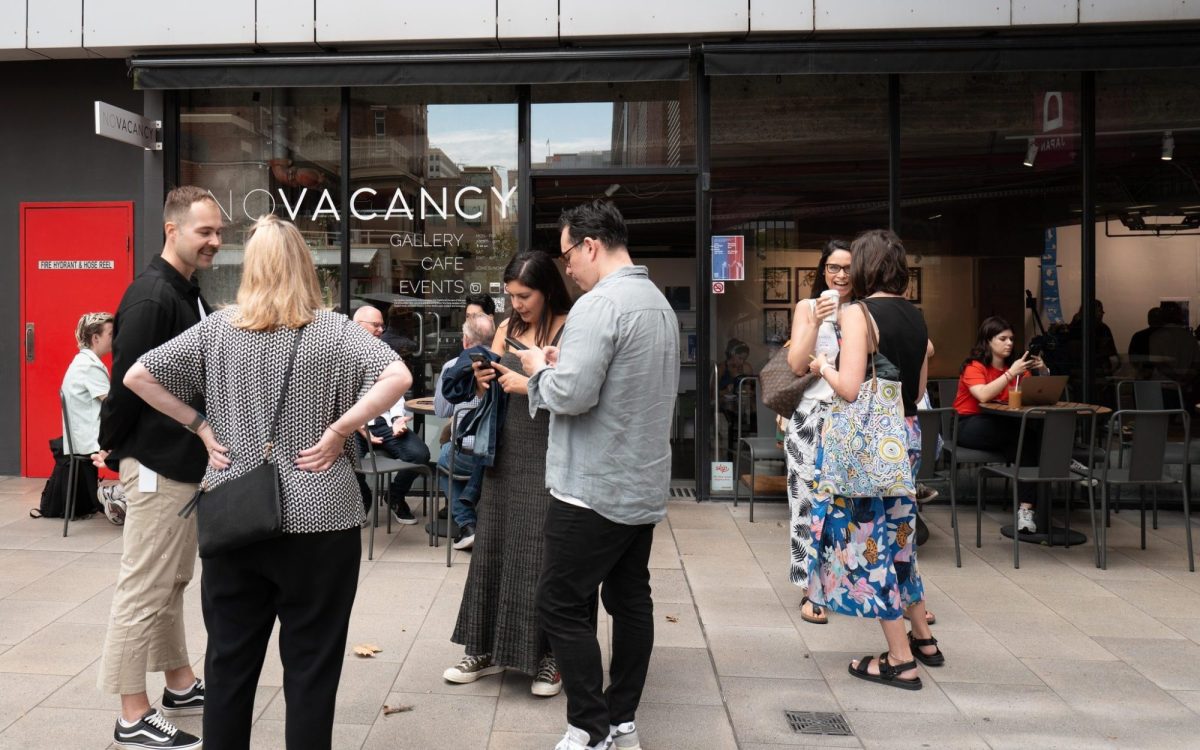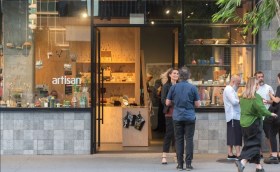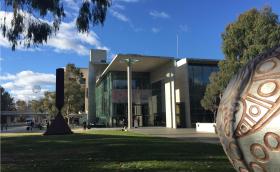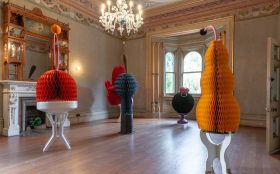Melbourne is known for its arts and culture precincts, but creative spaces can also be found in even the most commercial of locations. No Vacancy is one such example, an art space-café hybrid housed inside the QV mall, in the heart of the city’s CBD. It was established by a group of artists in 2008 as a pop-up space below the current venue.
With a sleek architectural sensibility and a tall open space to accommodate large artworks, No Vacancy distils everything cool about Melbourne into one for-hire space.
No Vacancy is defined not only by its space or location, but by the mission carried out by art director, Matthew Naturani. With a background in hospitality and a strong interest in art and photography, Naturani took upon the role of creative director in July 2018.
Currently, No Vacancy is in the middle of its 2024 programming, open to applicants from all backgrounds and ages. The model lies in creating an opportunity for emerging artists, setting a lower barrier than institutionalised or private galleries. Artists can submit a proposal to No Vacancy and, if selected, have their works displayed in the space, starting from a two-week duration. Artworks are available for purchase during the exhibition.
Paired with its prime Melbourne CBD location, No Vacancy provides a precious and unique experience for many to host their first solo or collaborative exhibitions.
In the article:
An architectural gallery-café hybrid
No Vacancy’s café section was a secondary development in 2016, and it also serves as a bar during evening showcases. The current venue came about during the time of the COVID pandemic when the space was made more affordable.
Ware Architects was commissioned to design the interior on a small budget, merging the hospitality and exhibition spaces through the aesthetic of galvanised steel and raw concrete. The café has been the lifeblood of the space during times of economic uncertainty, including the pandemic and the current cost of living crisis.
To remain true to the purpose of No Vacancy, Naturani says he has to essentially be two businesses at once – barista by day and director by night. The space is designed to speak to its utilitarian nature, as well as provide a clean backdrop for artworks to pop on their own.
Read: $1.2 million boost for public art recognising women
Upon entering the gallery, the emphasis on spatial design is immediately noticeable, but Naturani explains that it’s also a deliberate decision to not create any obvious signage and, instead, tap into the feeling of “discovery”.
‘There are these ideas of laneway secrets, coffee, art… That’s Melbourne,’ Naturani tells ArtsHub.
Rent for the exhibition space has increased since 2021, yet the gallery-for-hire rate has remained the same for artists, a decision about which Naturani is adamant. ‘It’s always been about making it accessible. It’s made for everyone, and you can’t do that if you start increasing the prices on everything.’
Hope and cohesion at No Vacancy
Over the past few exhibitions, a cohort of artists – some in their formative stages and others more experienced – have showcased works on this even playing field. For the viewer, it stirs a sense of curiosity and even challenges the way the art is appreciated, as the space is so shared and social.
It could be said that No Vacancy lives up to its name, as there never seems to be a lack of high-quality work residing there.
Recent exhibitions include Made From Rain by self-trained painter Rhys John Kaye, Walking On Shells by Sydney-based artist Georgia McFarland and group show The Softest Place On Earth, curated by artist Mythra Sage Schwartz and with some of her own pieces included.
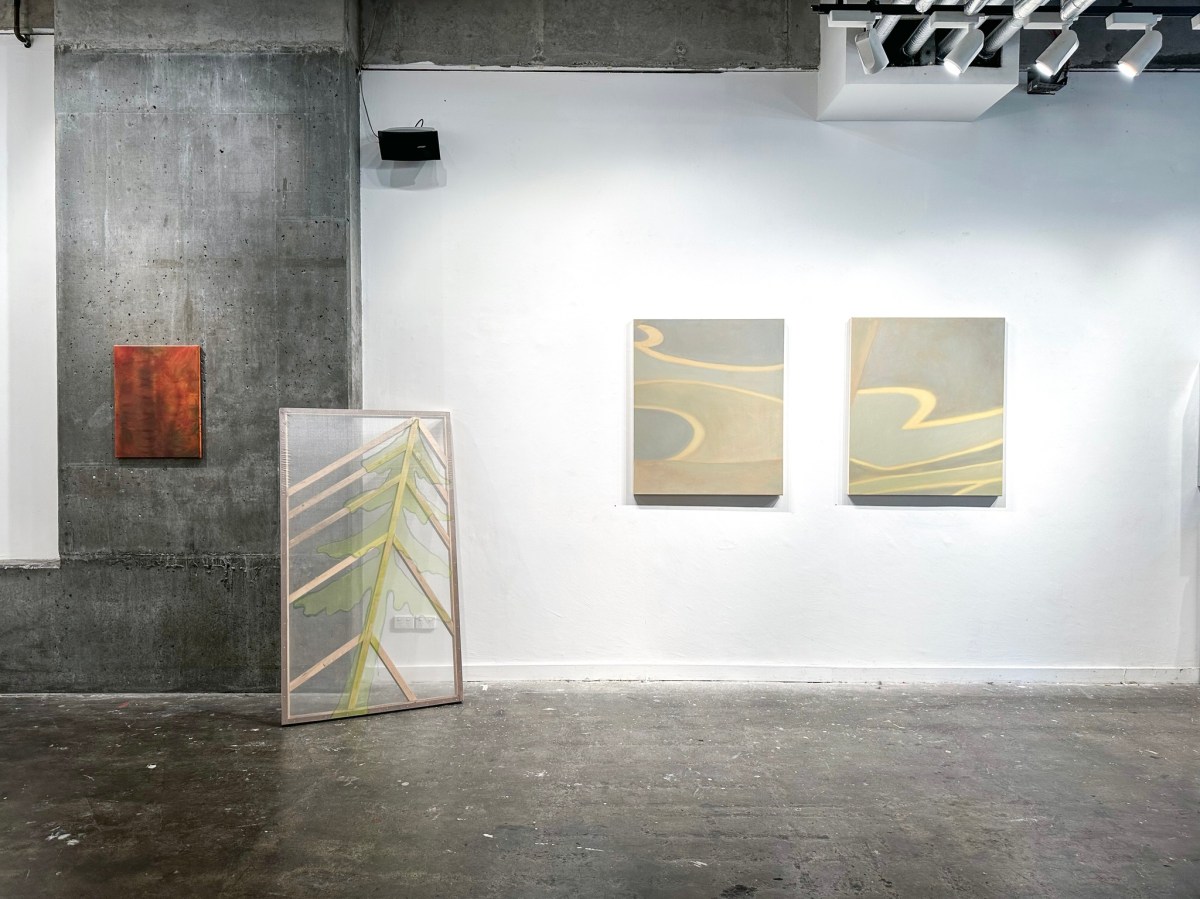
Exhibiting artists are chosen by Naturani and Schwartz. They are selected for displaying quality and skill and creating unique artworks, as well as having a practice that shows an ongoing commitment to growth. Naturani says, ‘No Vacancy looks for artists who we believe will gain a tangible benefit from working with [the space], that is to say that their exhibition experience will serve to further their careers. Ideally that means they’re ready to take the step to fill a big space like ours, but also take on the risk that comes with that.
‘Being a for-hire space, we want to do our best to sell enough artworks to cover their costs and some more, hopefully funding the next step they want to take in their careers,’ Naturani adds.
This hope is shared by Schwartz and reflects her thoughts of curating The Softest Place on Earth. ‘I am an artist foremost and my practice extends into curating. I approach curating similarly to making an artwork,’ she says. Her conversation with the other artists involved discussing their own experiences of ‘softness’.
One thing Schwartz highlights is a strong but unexpected sense of cohesion that came about when developing an exhibition for No Vacancy. ‘Many of the artworks had architectural shapes and lines combined with either softness of colour or material application. This was echoed again in the site as the gallery has distinct architectural interventions throughout the space,’ adds Schwartz.
What No Vacancy provides is a valuable platform in the heart of the city – whether you are a young artist looking to step out and showcase something on a professional scale, a collector looking for something exciting to support or simply an observer of art and lover of coffee.

